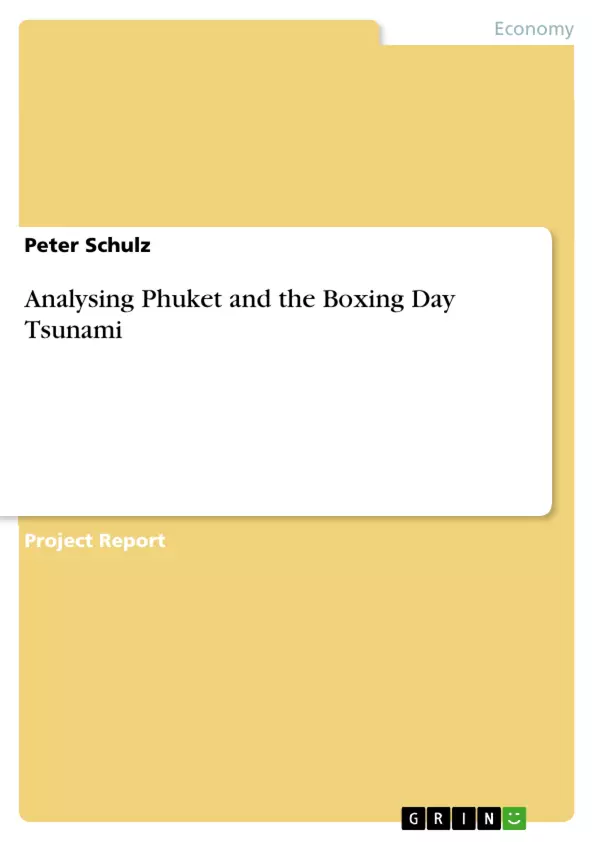This report examines the destination of Phuket with regard to the evolution of the tourism industry until 2004 as research allows a clear picture for this time due to the availability of data. Concepts of accessibility, availability and stability will be presented before proceeding to analysing Phuket’s attractions. A classification into a destination lifecycle and government policies are introduced before summarising the destination.
The next chapter describes the Boxing Day Tsunami and its effects on Phuket before continuing to evaluate which measures the destination has taken to counter-steer prevailing problems. Finally, Phuket’s behaviour will be compared to other destinations that have suffered similar external shocks before concluding with an outlook for tourism in Phuket.
Table of Contents
- Introduction
- Phuket as a tourist destination
- Accessibility
- Availability
- Stability
- Attractions
- Destination Lifecycle
- Government Policies
- Phuket's problems: mass tourism and more
- Phuket and the Boxing Day Tsunami
Objectives and Key Themes
This report examines the tourism industry in Phuket, Thailand, with a focus on its development leading up to the 2004 Boxing Day Tsunami. The report explores concepts of accessibility, availability, stability, and attractions in the context of Phuket's transformation into a mass tourism destination. It also analyzes the impact of the Tsunami on the island, including the challenges and strategies for recovery.- Evolution of tourism in Phuket
- Impact of the Boxing Day Tsunami on Phuket
- Sustainability of tourism in Phuket
- Government policies and their role in tourism development
- Comparison of Phuket's recovery with other destinations affected by similar events
Chapter Summaries
Introduction
This introductory chapter provides an overview of the report's focus on Phuket's tourism industry, specifically its evolution until 2004, and the impact of the Boxing Day Tsunami. It introduces the key concepts and analytical framework used throughout the report.Phuket as a tourist destination
This chapter delves into Phuket's transformation into a popular tourist destination, analyzing its accessibility, availability, stability, and attractions. It examines the island's growth in tourism, the development of infrastructure, and the role of government policies in promoting tourism. It also discusses Phuket's position within a destination life-cycle model.Phuket's problems: mass tourism and more
This chapter highlights the challenges and concerns associated with Phuket's mass tourism model, including issues related to sustainability, environmental impact, leakage of economic benefits, and the potential for exceeding the island's carrying capacity. It also explores the impact of Phuket's unique attractions on its competitiveness and future prospects.Phuket and the Boxing Day Tsunami
This chapter examines the devastating impact of the 2004 Boxing Day Tsunami on Phuket, analyzing the physical damage, the effects on the tourism industry, and the initial recovery efforts undertaken by the island. It provides an overview of the challenges faced by Phuket in the aftermath of the disaster.Keywords
This report primarily focuses on the tourism industry in Phuket, Thailand, with a specific emphasis on the impact of the Boxing Day Tsunami. Key areas of focus include destination development, mass tourism, sustainability, accessibility, availability, stability, and recovery from natural disasters. Other keywords include Phuket's attractions, government policies, and the impact of external shocks on tourism destinations.- Quote paper
- Peter Schulz (Author), 2007, Analysing Phuket and the Boxing Day Tsunami, Munich, GRIN Verlag, https://www.grin.com/document/113707



